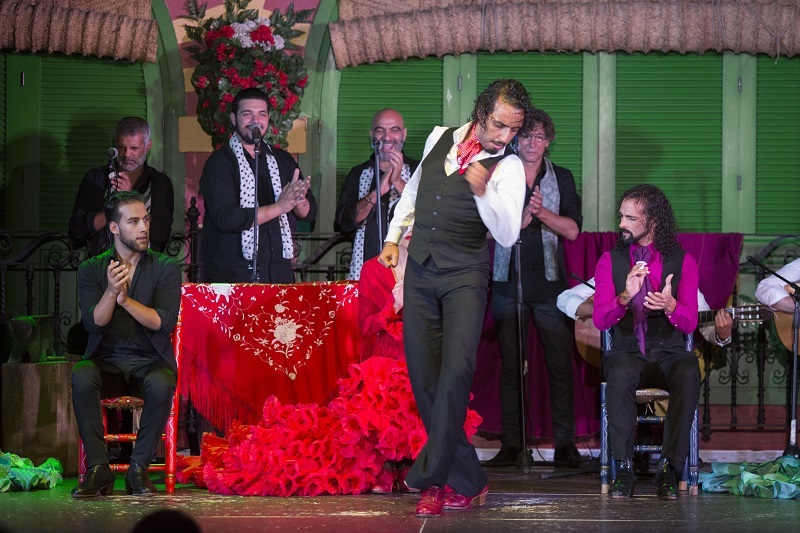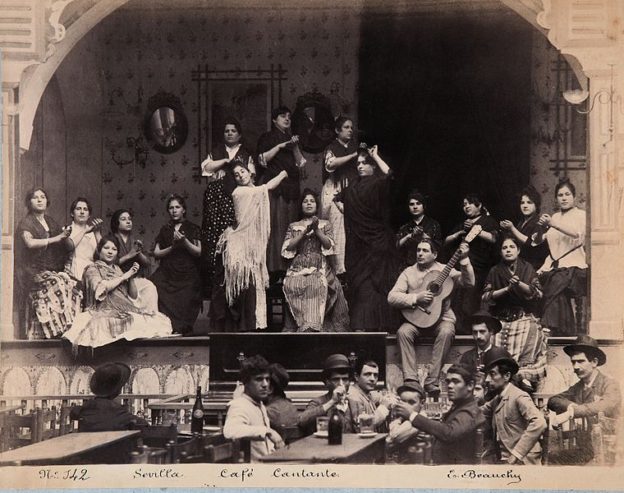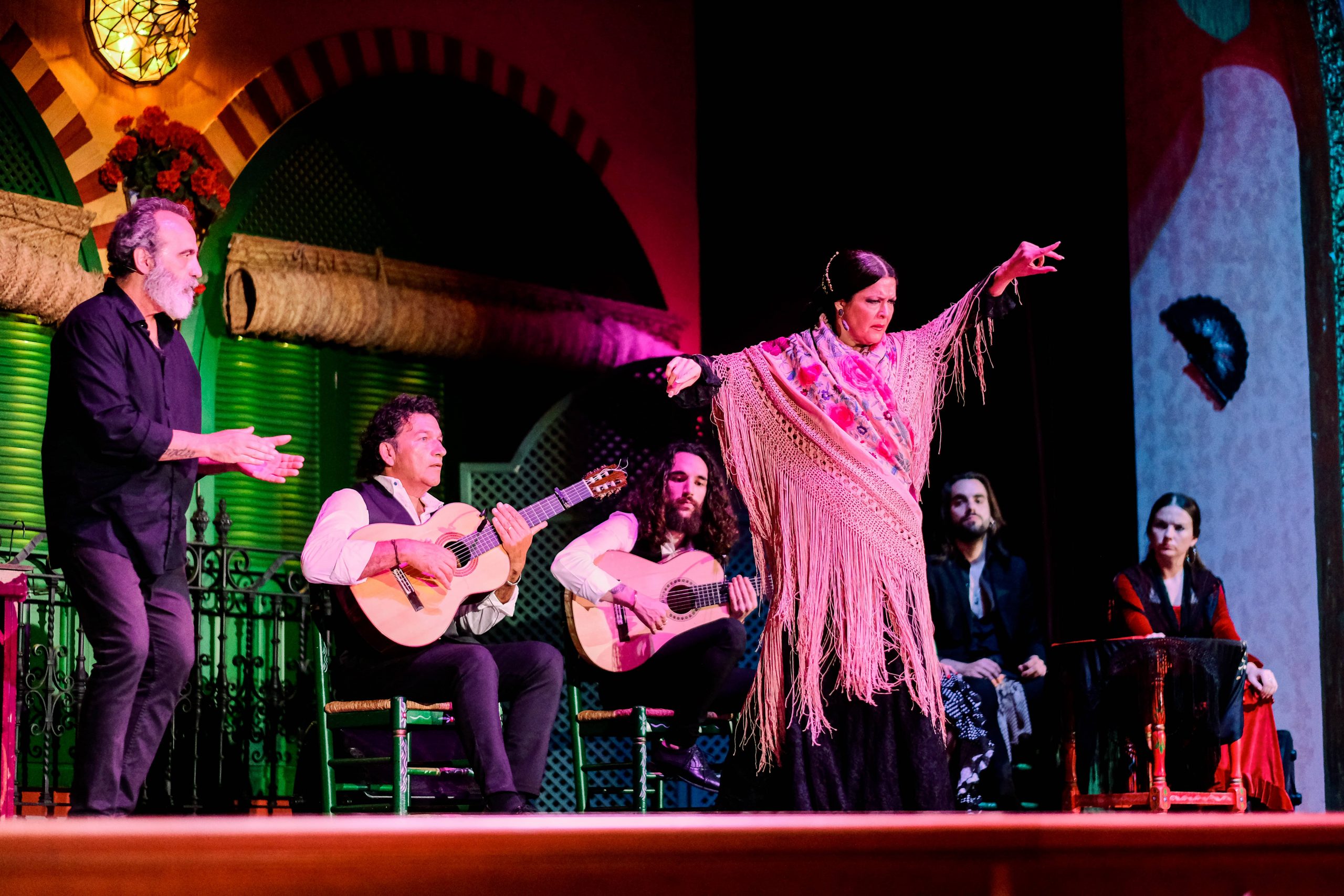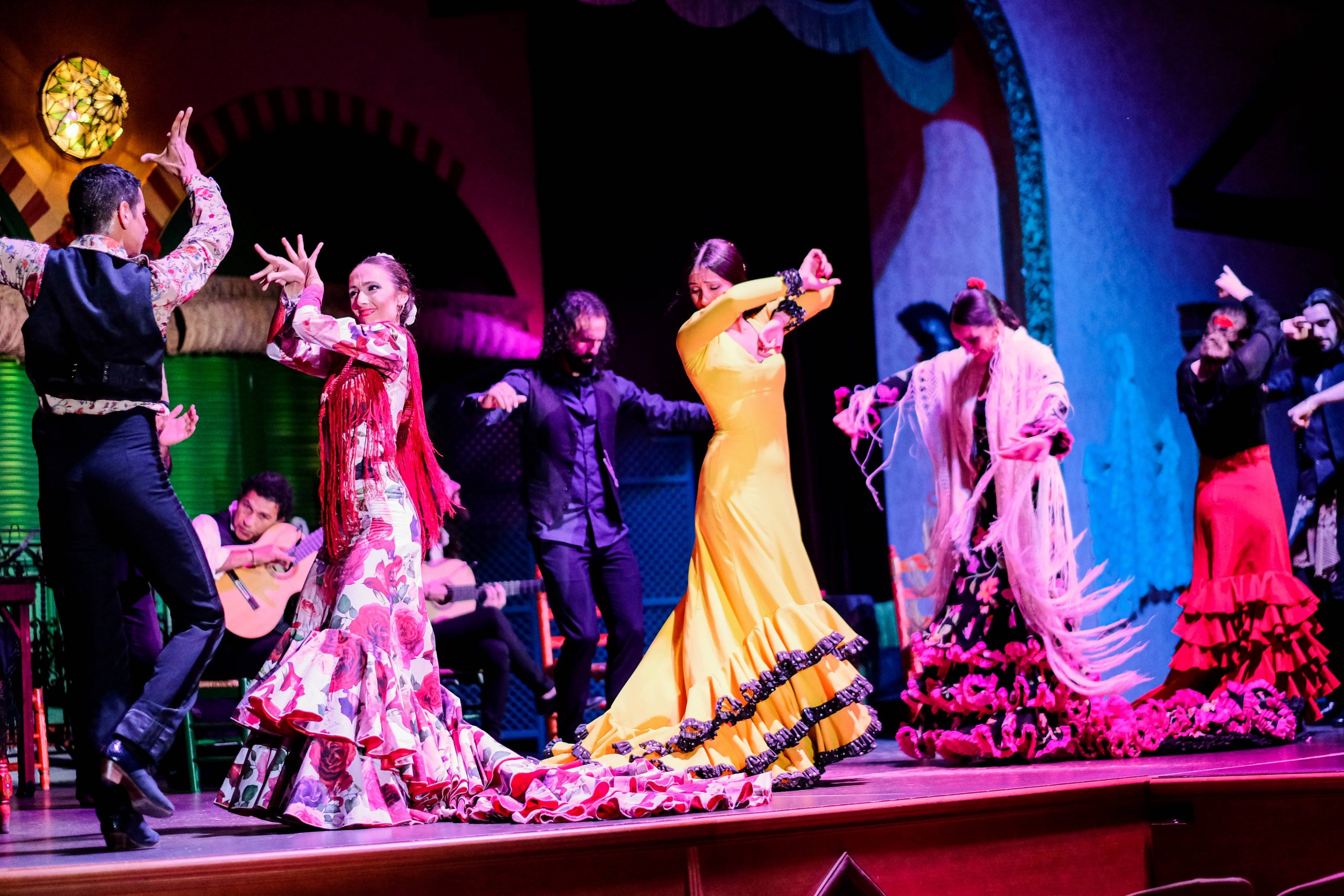
The flamenco fandango is one of the best known styles. Some theorists indicate that it is the most primitive song that exists. Of Arabic and Portuguese origin, this style is reminiscent of Portuguese fado and is the result of the mixture of cultures that have influenced its creation. Because the fandango is a style with different variants and is not exclusive to flamenco art.
The traditional division of the fandango distinguishes between the basic songs, the fandangos and their derivatives and, finally, those flamenco styles that have regional or American influences.
If we go through its history, in the traditional fandango we find its Arab origin, because of the similarity it has with Arabic-Andalusian dance and Mozarabic jugs. Then it spread and adapted to other Spanish regions, thus acquiring other own profiles. This is how the Moorish fandango was transformed into jacks, dolls or dawn, among other styles.
On the other hand, the Dictionary of Authorities of the Royal Spanish Academy, of 1732, assigns the American fandango, when referring to it as “it is a dance introduced by those who have been in the kingdoms of the Indians, which it makes the sound of a very cheerful and festive touch”.

In the 18th century, the fandango was the best known styke in Spain. A style that has evolved over time with the incorporation of instruments such as the bandit or the accompaniment of the dance, something that has caused the creation of other flamenco styles such as malagueñas, granaína, taranto or jaberas, among others.
Actually, fandangos exist in many corners of the world, hence it is the aflamencado that is associated with flamenco art, a version that emerged in the Andalusian atmosphere in the last third of the nineteenth century, coinciding with the rise of the singing cafes, lounges with tablao and chairs for the public who attended the flamenco shows that were held. Yes, as you are thinking are the original tablaos today.
The appearance of these places where enjoying live singing influenced the evolution of dance and the incorporation of the flamenco guitar, as well as the flowering of almost all flamenco genres. The singer used the ostinato (a figure that is repeated several times in a musical piece, consecutively and for several measures) and the fandango’s own stanza to create a vocal line of his own inspiration, composing numerous variants.
Originally, the fandango was a dance that began to become popular in Andalusia at parties, musical numbers or in theater tonadillas. That original fandango has little in common with what is known today.
He was instrumental and danceable at the time. His tone had a flawed tendency. From the Flemish fandango there is news about 1870, and everything indicates that it is a genre that emerged in Andalusia from the mixture of folkloric or traditional fandango, with the flamenco songs that were performed in Andalusian lands at that time.
The Andalusian atmosphere of the late nineteenth century, which coincides with the birth and proliferation of singing coffees, was the ideal environment for Andalusia to have its own fandango, the Flemish fandango.
The fandango is one of the fundamental styles of flamenco, not only because of what it represents as a style, but because it has been a trunk from which other styles have emerged that have personality within flamenco singing, such as malagueña, granaína, taranta or mining , among others, which, based on flamenco, were constituted in their own styles.

As for the characteristics of the flamenco fandango, we would need more than this article to be able to delve into it. However, we will make a review of those that are more important or more recognizable to the general public.
To study the fandango, and all those songs derived from it to which we have referred, it is convenient to make a classification of these songs, according to their historical appearance. And so we will have:
The fandango is structured on a 3/4 measure and has a great tonal variety. The flamenco fandan copla consists of four or five octosyllable verses, which sometimes become six by repetition of one of them.
The Andalusian fandango, as we conceive it today, has a musical element that characterizes all its variants, popular and flamenco. This badge is based, on the one hand on the alternation of letters and instrumental variations, and on the other, on the tonality with which these songs are accompanied.
The Andalusian fandango shows numerous variants that, in an attempt to classify, would allow us to differentiate into popular fandangos and flamenco. Let’s say that the difference between one and the other is that the former are interpreted on a ternary compass (3/4), while the flamenco version has a free metric. Among the ‘compás’ fandangos, the numerous variants of Huelva, those of Almería, Lucena, the granaínos, those of Málaga, the verdiales stand out.
Some fandangos, preferably those of Huelva, usually begin with a word extracted from the first verse, which defines the theme that the song is about. The different types of strumming in Huelva and the Abandolaos have numerous local variants. Free accompaniment raises not a lack of rhythm, as they say, if not an internal rhythm that arises from the interaction between singer and guitarist, for the benefit of greater expressiveness of the sung text.
The formal structure of the fandango is based on alternation of sing and instrumental variations, sometimes ending with a lighter rhythm letter. They are accompanied basically with the guitar and the palms, although it can be heard accompanied with lutes in the high Andalusia and with violins and tambourines when it is verdial in Malaga, and, of course, ‘a palo seco ‘ (without music).
As we see, the fandango is a very rich style with multiple variants. Difficult to accompany because a danceable fandango is not the same as a natural or personal one, where the expression is as important as the music itself. We have already said it, addressing this style in a single article falls short. So today we are left with an initiation in this exciting flamenco style.

However, to enjoy this style, it is best to attend a live flamenco show. At El Palacio Andaluz, you have the opportunity to see how our artists interpret flamenco fandango, since it is part of the show that is celebrated every day in our flamenco tablao. If you visit Seville, do not hesitate to live a unique experience and see our live show. We will wait for you!
© 2024 El Palacio Andaluz. All rights reserved.